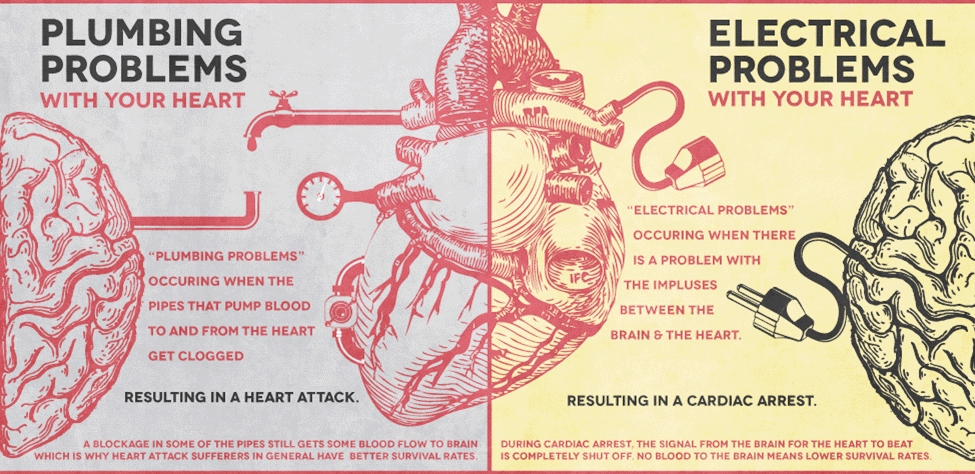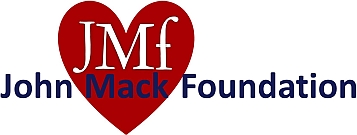In our last post (The Today Show – Jeff Rossen Shows What To Do When Someone is Having a Heart Attack Or Experiencing Cardiac Arrest), the term “heart attack” was used predominantly throughout the video. Many times, the terms “heart attack” and “sudden cardiac arrest” (SCA) are used interchangeably but there are big differences between the two.
 Image Credit: AED.com‘s “What You Don’t Know Will Kill You Infographic“
Image Credit: AED.com‘s “What You Don’t Know Will Kill You Infographic“
A heart attack is a “plumbing” problem; the victim may present with warning signs like chest pains before a heart attack. During a heart attack, the blood supply to the heart is slowed or stopped due to a blockage. The person may or may not lose consciousness. A heart attack may cause cardiac arrest.
Cardiac arrest is a failure of the heart’s “electrical” system. Most cardiac arrests are due to abnormal heart rhythms called arrhythmias. There are four types of arrhythmias that can lead to cardiac arrest: ventricular fibrillation (V-fib or VF), pulseless ventricular tachycardia (V-tach or VT), asystole and pulseless electrical activity (PEA). Ventricular fibrillation, in which the heart’s electrical impulses suddenly become chaotic and ineffective, is the most commonly identified arrhythmia in cardiac arrest patients.
(The American Heart Association also has a helpful infographic that distinguishes between cardiac arrest and a heart attack.)
When an arrhythmia strikes, blood flow to the brain stops abruptly causing the victim to collapse and quickly lose consciousness. Death can follow unless the person receives emergency medical help and a normal heart rhythm is restored within minutes.
Chances of survival decrease by 10% for every minute that passes without CPR and a shock from a defibrillator. After 10 minutes without oxygen to the brain, it is unlikely the victim will survive. If revived, the person may suffer irreparable brain damage.
Performing CPR immediately is key to survival. CPR forces blood to continue pumping to the vital organs. When the heart doesn’t pump normally, it begins to fill with blood, enlarging it and causing it to harden. In this case, the heart becomes less likely to receive defibrillation to restart it.
If an AED is available, it should be retrieved immediately and applied to the victim. The AED will analyze the victim’s heart rhythm and determine if a shock is needed. If a shockable rhythm is detected, the AED will advise to give a shock. If a shock is delivered, it stops the chaotic quiver and allows the heart to resume its normal rhythm. Some cardiac arrest victims require more than one shock.
If a shock is not advised, you should continue with CPR. The AED will continue to analyze the victim’s heart rhythm to determine whether the heart falls into a “shockable” rhythm.
More and more AEDs are being installed as state and local legislation mandates them. It’s common to see them in public places like schools, sports stadiums, shopping malls, restaurants, hotels, airports, churches and gyms. AEDs increase the chance of survival in sudden cardiac arrest incidents by making this life-saving equipment more readily available for use in an emergency situation.
If your organization is a non-profit organization that could benefit from an AED, please contact the John Mack Foundation and request an AED today!
